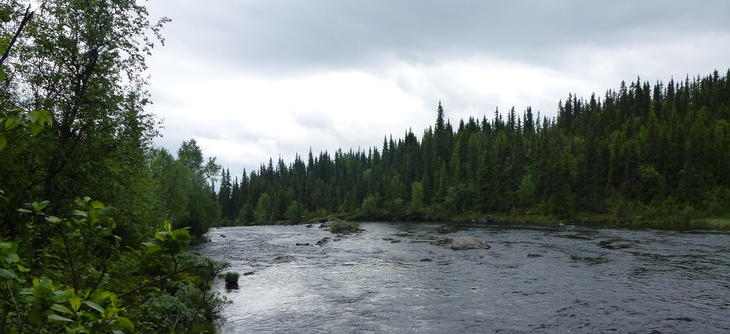Vinda Power Plant

The Vinda river in Valdres, Norway can provide 56 GWh of new power. A power plant of this size requires a full licensing process.
Facts about Vinda
(All figures are tentative estimates)
Location: Vinda is located in Øystre Slidre municipality, Oppland county.
Production: Approx. 56 GWh
Waterfall: 231 metres
Cost: NOK 255 million
Fall rights: Skagerak Kraft, Øystre Slidre Municipality, the Norwegian Church Endowment, private landowners.
Minimum water flow: NVE proposal: 280 l/s in winter and 720 l/s in summer.
Update 7 November 2018: The Ministry of Petroleum and Energy has denied the licence application for Vinda Power Plant.
Norway has a national target of increasing the production of renewable energy by 2020. Skagerak Kraft is working to make its contribution, and is planning several hydroelectric power developments. One of the larger ones is located in Vinda river in Øystre Slidre municipality in Valdres, Norway.
Skagerak Kraft holds approx. 65 per cent of the fall rights for the watercourse, while the municipality, the Norwegian Church Endowment and one landowner hold all the remaining rights. Skagerak is in dialogue with the other fall rights owners to look at a possible collaboration.
Large power output
Tentative calculations suggest that the power plant could have an annual production of approx. 56 GWh. This is large enough to be classed by the Norwegian Water Resources and Energy Directorate (NVE) as a large power development project. This requires a thorough licensing process with both a preliminary notification and impact assessments before a licence application can be submitted.
The plans for the power plant include an intake approx. 100 metres downstream of Søre Vindin lake. From there, the water is led through the mountain down to the power station and then out into the Heggefjorden. This gives a waterfall of approx. 231 metres.
Impacts are inevitable
Hydroelectric power plant developments will always have an impact on their surroundings, both positive and negative. A dedicated impact assessment programme will map out the impact on nature and society. To reduce this impact, today’s requirements for such developments always include a minimum flow. A positive effect of the development will be the revenue for landowners and the municipality.
The NVE recommends developing
In its letter to the Ministry of Petroleum and Energy dated 9 September 2017, the NVE recommends granting a licence for Vinda Power Plant. The NVE emphasises that a development will give a significant contribution to the national renewable energy targets. The power plant will also provide revenue for Øystre Slidre municipality and contribute to local value creation. In the NVE’s view, the negative consequences in the operational phase are mainly linked to effects on cultural environment, natural diversity, local outdoor life and fishing. To mitigate this, a significant release of the minimum flow is proposed. It is assumed that the power plant will be installed with Pelton turbines to reduce the risk of the spreading of European perch. Completed impact assessments have been approved in line with the Norwegian Planning and Building Act. A final licensing decision will likely be in place by the end of 2018.
A modern power development
Emphasis is placed on limiting the impact of the development as much as possible. A regulation reservoir will not be established, and the entire waterway will go through the mountain rock. The visible interventions will therefore largely be limited to the intake at Søre Vindin and the power plant by the Heggefjorden. During the construction phase, there will be some disadvantages due to the handling of landmasses while building the tunnel. The masses from the tunnels will be a resource that can be used for a variety of purposes in society. The NVE’s proposal for minimum flow, significant storm water flow and inflow from the residual flow area will help make Vinda an attractive area for outdoor activity also after the construction has been completed.